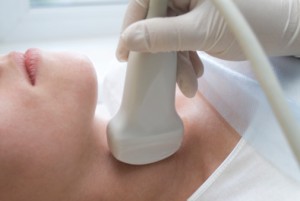Cellulite Treatments - Facts & Fiction
Orange peel skin is a skin issue that up to 80% of women have to contend with. Most commonly seen in the bottom and thighs cellulite affects women with varying degrees of "dimpliness" and associated body image distress. It is possible to minimise the appearance of cellulite, however, the treatment requires more than just use of a miracle cream and can take time to have an effect.
Cellulite occurs under the subcutaneous layer of fat, just under the skin. Between the subcutaneous layer and the dermis there is net of fiberous connective tissue, the septae, which stores fat cells in compartments. Due to decreases in microcirculation and increases in fluid retention and blood pooling the septae become less flexible and pressure builds up pushing the fat cells against the skin. With time, the septae become a fiberous honeycomb structure that traps the fat cells causing the large bumps that are the hallmark of cellulite. The area has very poor blood supply, which is why the skin where cellulite occurs often feels cold to touch and poor lymphatic flow so is not easily removed by diet and exercise.
The cause of cellulite is not clear-cut. The common triggers are as mentioned above, are poor microcirculation and lymphatic flow however, what causes these changes in the first place is the issue. Genetics certainly plays a role with those susceptible to cellulite having an increased number of fat cells, poor tissue integrity including blood vasculature and lymphatic vessels and hormonal sensitivities.
The balance of hormones may play a role with high oestrogen and low androgen levels potentially contributing. Men with low androgen levels are more likely to develop cellulite. Estrogen is the likely driver in women, with higher levels promoting the growth of fat cells around the breast, thighs and buttocks.
A sedentary lifestyle may contribute to a worsening appearance of cellulite, as it is associated with weight gain, which can increase the pressure of the fats cells protruding into the dermis. It is important to note however, that excess weight is not the cause of cellulite and it is equally found in individuals of normal and low weight, as it is those that are overweight. On the other hand exercise encourages the flow of lymph (removing waste products) and circulation (supplying nutrition) and may improve the appearance of cellulite.
There are no proven treatments for cellulite however stimulating the dormant, subcutaneous fat to be more active and encouraging its re-absorption back into the body metabolism may assist. This incorporates improving local blood and lymph flow to the area. In addition increasing the elasticity of skin will mean it is better able to cope better with increased fat volume.
Most topical products aimed at treating cellulite contain cellular metabolism stimulants. Some examples include carnitine, cayenne and caffeine all of which theoretically increase lipolisis (fat metabolism). Some also include ingredients that increase skin tissue integrity by promoting lymph or blood flow such as rosemary oil, gotu kola or horse chestnut or decrease fluid retention such as birch oil. Caffeine containing creams are by far the most popular as they promote a reduction in fluid retention and increase cellular metabolism thereby breaking down cellular fat. While potentially effective in theory, no research backs up the effectiveness of caffeine for the treatment of cellulite so before you rush out to buy a cream, try massaging the coffee grains from your morning cup into cellulite affected skin each day and see what happens. If too messy and you do choose to work with a topical product, choose one that contains both cellular metabolism stimulants and improves the integrity of the skin.
Other topical treatments that may assist include massage and skin brushing the area affected by cellulite, which help to stimulate both the lymphatic system and the microcirculation. Done daily, dry skin brushing will improve the overall appearance of the skin as it also helps remove the top layer of dead skin cells.
Using dietary measures to improve cellular health will not only make you feel better, it may well help you to reduce cellulite. However no specific diets have research to support anti-cellulite claims. That being said many are associated with a reduction in the key factors that promote of cellulite such as inflammation, poor microcirculation, connective tissue weakness and sluggish fat metabolism. Reducing dairy and sugar consumption seems to have the greatest effect on minimizing the appearance of cellulite. Both dairy and sugar are associated with inflammation and dairy is high in saturated fats, which can impact microcirculation and fat metabolism.
The key to minimising cellulite triggers is a healthy diet high in good fats, whole grains, fruit, vegetables and water.
If all else fails and you have an emergency trip to the beach, fake tan can help temporarily reduce the appearance of cellulite as can a good pair of swimmers and some board shorts or a sarong. Try to use a fake tan based on natural ingredients such as betacarotene as this will minimise the use of chemicals that may in fact contribute to cellular toxicity. And remember most of all to focus on your best assets and the parts of the body that you do love because above all, confidence in yourself is attractive.
-
Proactol – Proven Alternative To Prescription Weight Loss Pills
Today more and more people become concerned with weight loss issues as
-
Lose Weight Forever With An Online Weight Loss Program
Who says you cant lose weight with a diet pill? I beg to differ. Did
-
Low Carb Diet – How to shed weight utilizing Low carb diet plan making use of the Asian way
Currently we’re going to look at some techniques in which Asians
-
What To Do When You Want To Lose Weight
You must keep an open mind when it comes to weight loss advice.
-
Intellectual Hyponsis For Weight Loss
Weight loss and obesity are spreading like an epidemic across the worl
-
Best Way To Lose Weight Easily: Breaking Some Rules
Once you intend to lose weight, there mi
- DON'T MISS
- 7 Insantly Useable Weight Loss Tips
- Vitamins Minerals And Essential Nutrients Make The Best Weight Loss Supplements
- This Is Not A Diet Book
- Does skipping breakfast impact weight loss?
- How I Lost 40 Pounds In Six Weeks
- Fast Weight Loss is Possible if you’ve Got the Inside Scoop and We’re Going to Share it with You
- Misconceptions about Losing Weight
- Affirmations For Weight Loss
- Does Muscle Burn Fat?
- Weight loss ?fast and lasting




